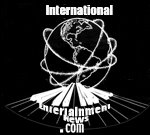NASA Langley Locations Featured in New Warner Bros Film
NASA Langley Locations Featured in New Warner Bros Film
HAMPTON, Va., Nov. 5 /PRNewswire-USNewswire/ -- The role of NASA will be played by: NASA Langley Research Center.
(Logo: http://www.newscom.com/cgi-bin/prnh/20081007/38461LOGO)
"The Box" is a new Warner Bros movie featuring locations shot at NASA's Langley Research Center, Hampton, Va. The film opens nationwide Friday, Nov. 6, and will appear locally in theaters around the Hampton Roads area.
Written and directed by Richard Kelly, who is best known for "Donnie Darko," Kelly adapted the original script with a NASA storyline. "The Box" is based on the 1970 short story "Button, Button" by Richard Matheson and stars Cameron Diaz, James Marsden, Frank Langella, and James Rebhorn. The film is being distributed in the U.S. by Warner Bros Pictures and has been rated PG-13 by the Motion Picture Association of America.
Set in 1976, one of the main characters is a NASA Langley engineer who works on NASA's Project Viking. Kelly based the character on his father, Lane Kelly, a former NASA researcher who worked on the Viking program.
NASA scenes in "The Box" were filmed at the Langley Full-Scale Tunnel, also known as the 30- X 60-Foot Wind Tunnel; the Landing and Impact Research Facility, a 240-ft.-high gantry structure; the Reid Conference Center auditorium; the main NASA Langley hangar; and the front entrance of Building 1299. Some nighttime driving sequences were shot on Center, as well.
Preproduction work started at NASA Langley in November 2007. Filming days were Jan. 28 - Feb. 1, 2008. Over 600 crew and extras worked at the NASA Langley locations during the Nov. - Feb. time period.
NASA Langley had management responsibility for the Viking project from its beginning in 1968 until April 1978. NASA Langley and NASA's Jet Propulsion Lab managed the mission for NASA's Office of Space Science, Washington.
One of the first and most successful missions to explore the planet Mars, Viking consisted of two identical spacecraft -- an orbiter and a lander. Viking 1 touched down on the Red Planet July 20, 1976; Viking 2 landed at Utopia Planitia on Mars on Sept. 3, 1976.
For more information about NASA Langley Research Center:
http://www.nasa.gov/centers/langley/home
Photo: http://www.newscom.com/cgi-bin/prnh/20081007/38461LOGO
AP Archive: http://photoarchive.ap.org/
PRN Photo Desk photodesk@prnewswire.com
Source: NASA
CONTACT: Chris Rink of NASA, +1-757-864-6786, +1-757-344-7711,
christopher.p.rink@nasa.gov
Web Site: http://www.nasa.gov/
-------
Profile: intent




0 Comments:
Post a Comment
<< Home